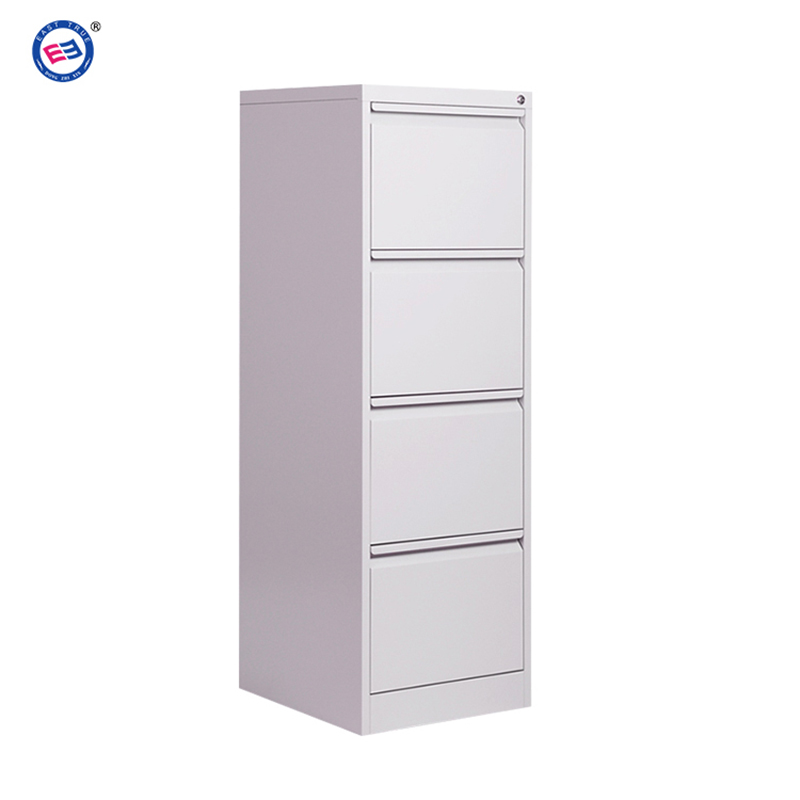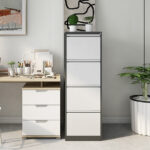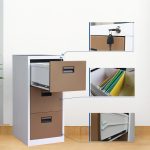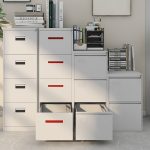Choosing the right steel drawer cabinet is essential for optimizing storage and enhancing the aesthetics of your home or office. A well-chosen cabinet can improve organization, save space, and complement your decor. This guide will help you make an informed decision by addressing key factors like size, style, durability, and budget.
1. Assessing Space and Size for Steel Drawer Cabinet
a. Measuring Your Available Space
Rule of Thumb: Always measure twice! Note the height, width, and depth of your available space. Leave at least 2-3 inches around the cabinet for ventilation and accessibility.
b. Choosing the Right Dimensions and Capacity
Small Spaces: Opt for tall vertical cabinets (e.g., 24”W x 16”D x 60”H) to maximize vertical storage.
Heavy-Duty Needs: Choose deep drawers (18”+ depth) for bulky items like tools or blankets.
c. Ensuring Accessibility and Placement
Pull-out drawers fully to ensure they don’t collide with nearby furniture. For tight corners, consider wall-mounted cabinets or sliding drawers.
2. Selecting the Right Type of Steel Drawer Cabinet
a. Vertical vs. Horizontal Options
Drawer cabinets come in both vertical and horizontal forms.
Vertical cabinets are great for small spaces and offer a compact solution for storage. They’re perfect if you need something tall, like a file cabinet, for office use.
Horizontal cabinets, on the other hand, tend to provide larger drawers and may work better in more spacious areas, offering more flexibility with storage.
b. Mobile vs. Stationary Designs
A mobile drawer cabinet comes with wheels, which makes it easy to move around. This can be particularly useful in an office setting, where you might want to rearrange things occasionally.
Stationary cabinets, however, are often sturdier and provide better stability for heavier items. They’re a solid choice if mobility isn’t a priority for you.
c. Specialized Cabinets for Unique Needs
There are specialized drawer cabinets designed for specific uses. For instance, a craft cabinet with dividers is great for organizing small tools and supplies, while a locking filing cabinet is ideal for securing sensitive documents. If you have a particular storage need, look for a cabinet that’s designed specifically for that purpose.



3. Evaluating Materials and Build Quality
a. Comparing Common Materials
| Type | Pros | Cons |
|---|---|---|
| Solid Wood | Timeless, durable, eco-friendly | Prone to warping in humidity |
| Plywood/MDF | Budget-friendly, lightweight | Less sturdy; edges may chip |
| Metal | Industrial vibe, fire-resistant | Dents easily; cold to the touch |
| Plastic | Waterproof, portable | Feels flimsy; fades in sunlight |
b. Assessing Durability and Construction
When evaluating the construction, make sure that the cabinet feels solid and well-made. Look for strong joints and check that the drawers slide in and out easily.
4. Prioritizing Durability and Safety
a. Weight Limits
Standard cabinets hold 25-50 lbs/drawer; heavy-duty models handle 100+ lbs.
Warning: Overloading drawers can warp slides or collapse the frame.
b. Safety Must-Haves
Childproofing: Magnetic locks or slam-proof drawers.
Anti-Tip Kits: Mandatory for units over 30” tall.
5. Matching Steel Drawer Cabinet to Your Decor
a. Match Your Aesthetic
The style of the cabinet should blend seamlessly with the existing decor in your room. The color and finish of the cabinet should be considered in the context of the surrounding furniture.
b. Color Hacks
Small rooms? Go for white or pastels to create airiness. Bold spaces? Try two-tone cabinets (e.g., navy base + white drawers).
6. Budgeting for Your Drawer Cabinet
Drawer cabinets come in a range of prices, so it’s important to set a realistic budget and choose a product that offers the best value for money.
a. Setting a Realistic Budget
Start by determining how much you’re willing to spend. Keep in mind that high-quality cabinets might come with a higher price tag, but they tend to be more durable and will last longer. Set a budget that takes into account both the cabinet’s functionality and its aesthetic value.
b. Comparing Prices and Quality
It’s worth comparing prices across various brands and retailers. Sometimes you can find great deals without compromising quality. Pay attention to reviews and customer feedback, as they can offer valuable insight into the product’s performance and durability.
7. Warranty and Maintenance for Steel Drawer Cabinets
A warranty is an important consideration, especially when making a significant purchase. Here’s how to approach warranty and maintenance for your new drawer cabinet.
a. Understanding Warranty Coverage
Before finalizing your purchase, check if the cabinet comes with a warranty. This can provide peace of mind, especially for high-end pieces. A warranty ensures that you can have the cabinet repaired or replaced if there are defects in materials or construction.
b. Tips for Cleaning and Maintenance
Regular cleaning and maintenance can prolong the life of your cabinet. Dust and clean the cabinet regularly using appropriate cleaning products. For wooden cabinets, consider using a furniture polish to maintain the wood’s sheen. For metal or plastic cabinets, wipe them down with a damp cloth to keep them looking fresh.
c. Knowing When to Repair or Replace
If your cabinet begins to show signs of wear, such as drawer jams, broken hardware, or structural issues, address the problem quickly. Depending on the severity, you may need to repair or replace parts of the cabinet. In some cases, replacing the entire unit might be the most cost-effective solution.
Conclusion
The perfect drawer cabinet balances functionality, durability, and style. Before clicking “buy,” ask yourself:
Will it survive daily chaos (kids, pets, or your 20-pound crockpot collection)?
Does it make your space feel more organized, not just less cluttered?
Invest time in choosing wisely—your future self will thank you every time you open that smooth-gliding, clutter-free drawer!





